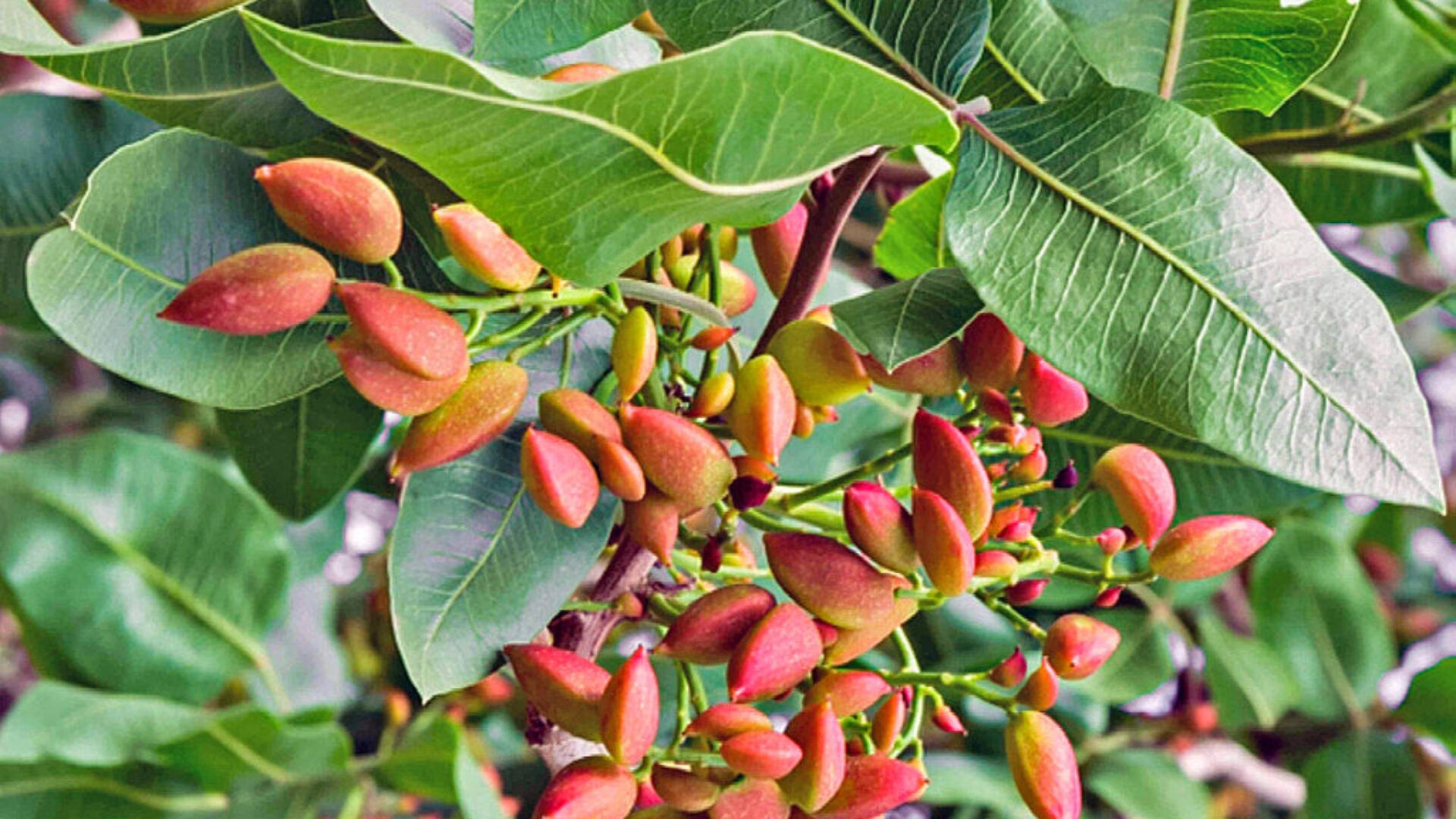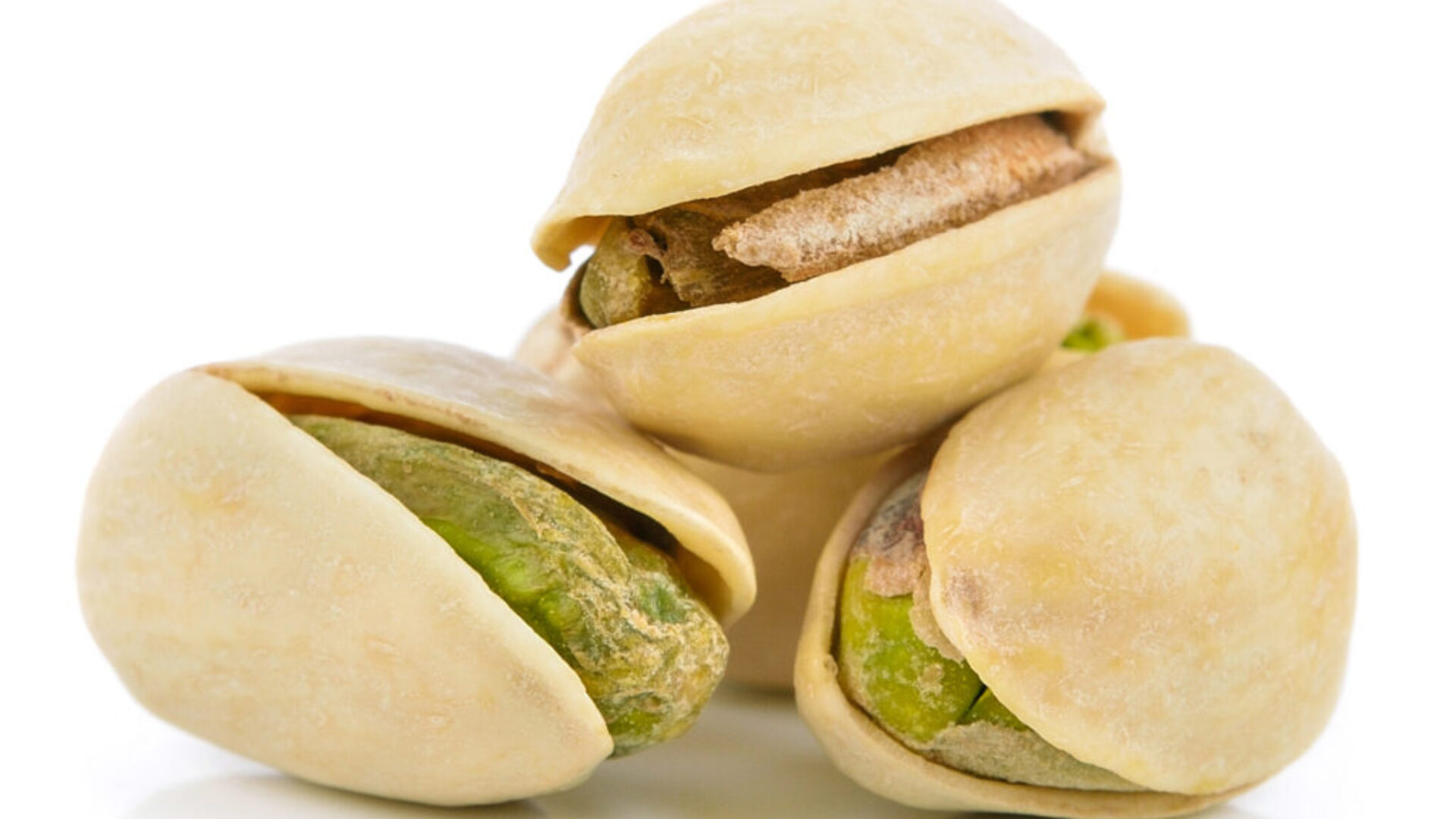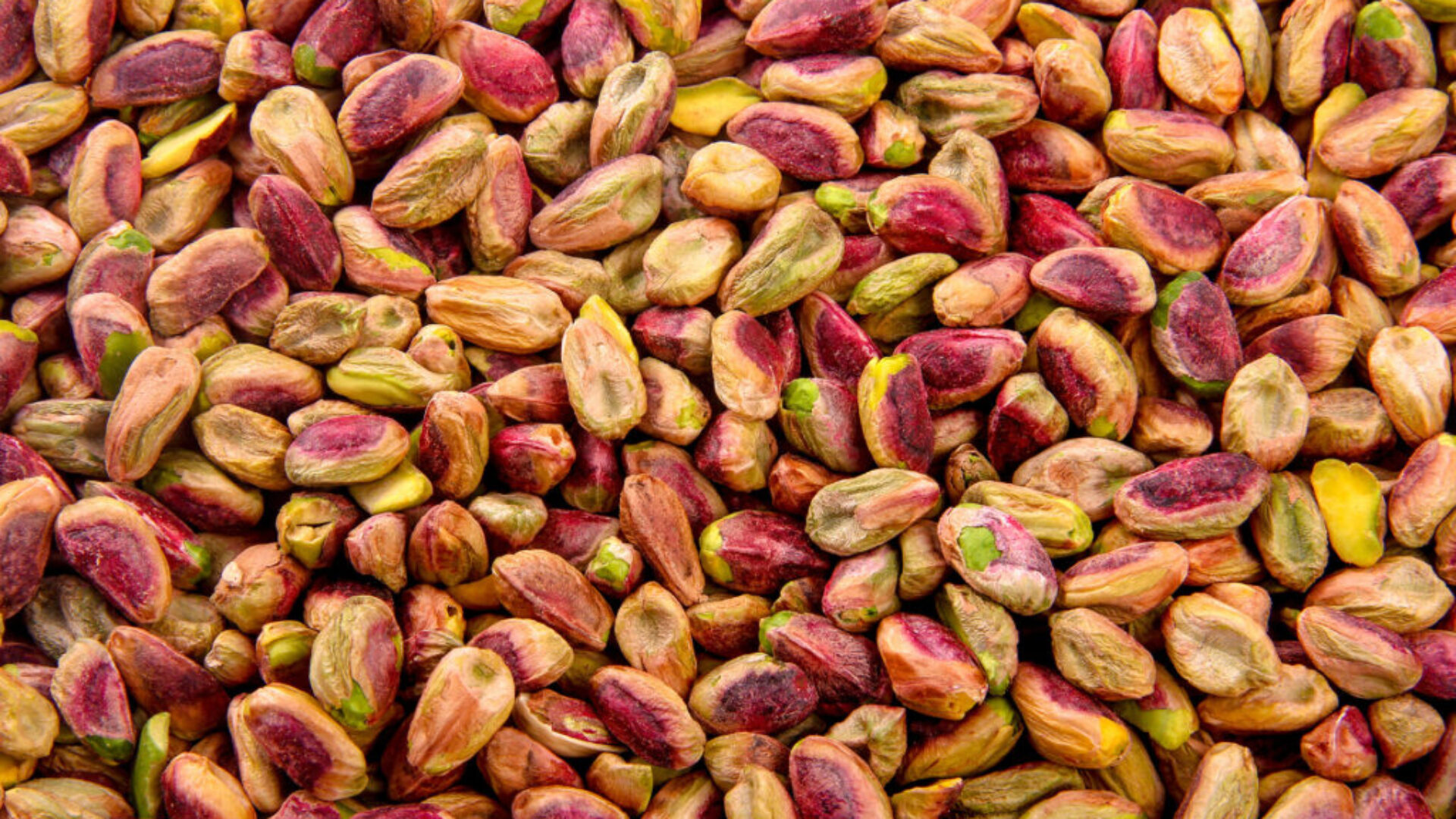Pistachios of Newberry Springs
In California, Modesto is known for its colorful almond groves, Indio for its International Date Festival, and of course Gilroy for garlic. Here in Newberry Springs, we’re known for our pistachios, as showcased in our annual Pistachio Festival that occurs every first weekend in November. Don’t be surprised that, when you drive around Newberry Springs, you’ll find there are orchards scattered all around the community.
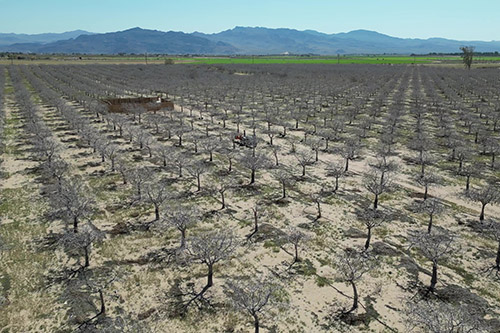
Written by John Wease
Newberry Springs’ economy has been agriculturally based since the earliest years. Apricots, alfalfa, chickens, turkeys, and even catfish were all commercially grown here on a large scale. In 1979, with the fall of the Shah of Iran, the world’s supply of pistachios became a concern. The U.S. pistachio industry expanded to meet the demand for this healthy, nutritious nut. Native to Persia, now Iran, it was a logical crop to grow right here in Newberry Springs.
The first pistachio seeds were brought to California in the 1850s. It was in the 1880s that the first pistachio nuts were imported to sell to Persian immigrants. To hide the generally poor quality of these imports, the nuts were dyed red. As the popularity of the pistachio grew, so did the interest in producing them here. It was a long process of testing varieties and methods of growing and processing. A very long process. The first commercial crop was produced in 1976. Ninety-eight percent of U.S. pistachio production is in California, primarily in Kern and Fresno Counties.
In the early 1980s, a lot of people planted pistachios here in Newberry Springs. The trees are planted as root stock. Later, male or female pistachio trees are grafted to this root stock. The male trees are strategically located in the orchard. Pollination is done by the wind, much like corn. Big Al, of Big Al’s Pistachio Farm was one of the first growers here. He performed grafting services for the growing number of producers. His processing equipment was used by many of the small growers to ready their crops for market. The first Pistachio Festival was held at his barn in 1998.
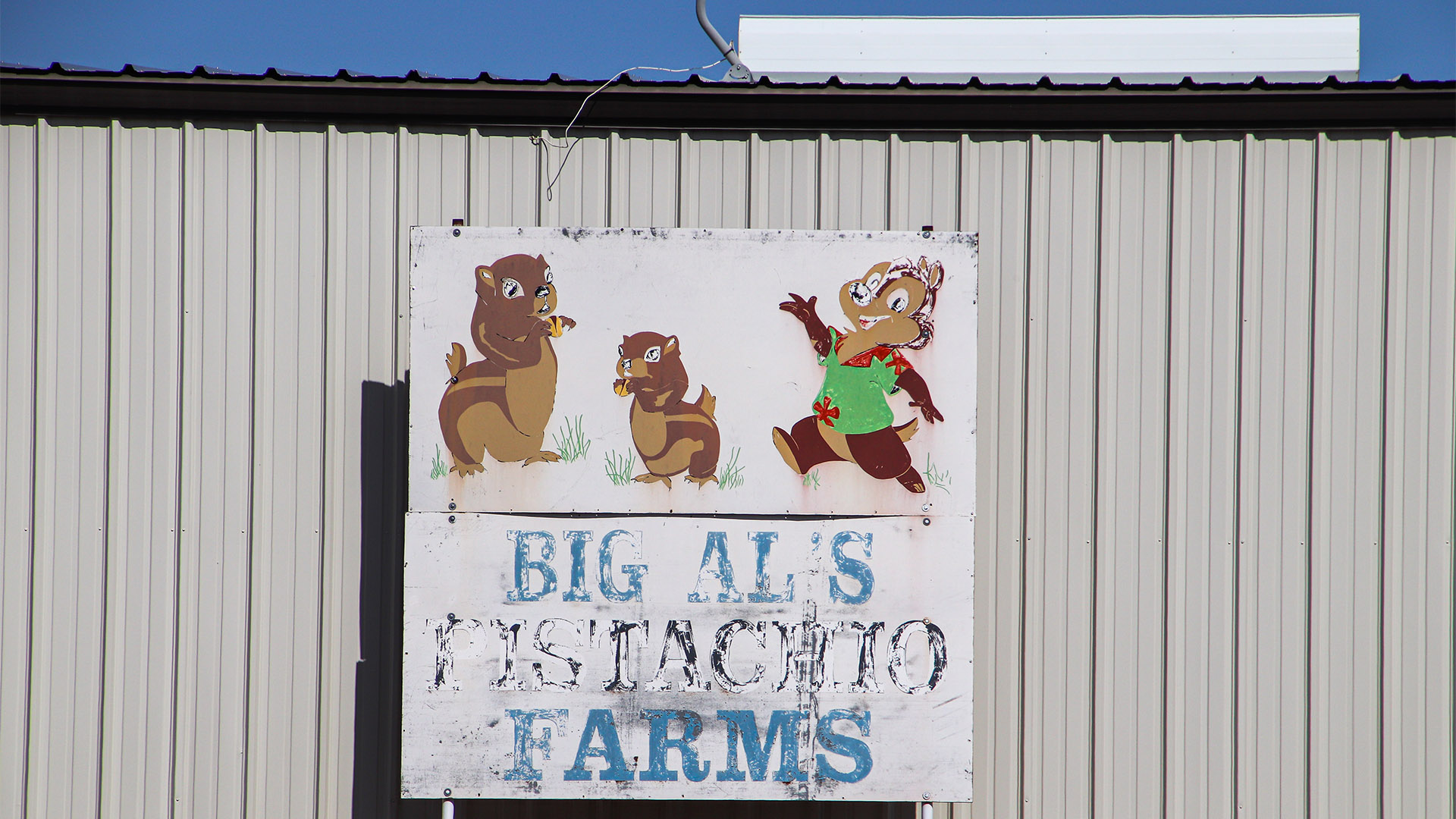
The Pistachio Festival moved to the community park and continued every year. It has grown to be a regionally known attraction attended by thousands. Although the festival has grown successfully, the pistachio industry in Newberry Springs is struggling. The same water use restrictions that brought the end to our apricots and alfalfa are now affecting the pistachio farms. Each year, the allowable water use is “ramped down” (see Water and the Mojave River in History of Newberry Springs). As the owners of the older farms cut back on water, their trees are producing less and becoming susceptible to insect infestation and diseases.
Some of the newer farms are using drip irrigation with electronic sensors to restrict water use to only when needed. Some of the older farms are converting to drip systems. Some are searching for ways to save their trees. A radically different approach is being suggested by local resident Keller Horton, PhD. Dr. Horton is a permaculture expert and believes with permaculture he can triple crop production while using half the allowable water and bring the suffering trees back to good health.
Permaculture is really nothing new. It is sustainable farming that mimics natural ecosystems. Nature doesn’t grow in long straight lines of single plant types. Those are the inventions of commercial farmers to allow tractors and other equipment to drive down the rows to dispense chemical fertilizers or spray the crops with insecticides. And, by crops, I mean the chemical-laden vegetables and fruits we buy at the grocery store. Permaculture uses nature’s way of combining different types of plants that work together to meet the needs of all.
Poly crop, or companion planting, is not new. The ancient indigenous people of the southwest famously planted the “three sisters.” The three sisters were grain corn, beans, and squash. The corn grew tall and provided a trellis for the climbing beans. Beans are a nitrogen fixer. That means they take nitrogen from the air and put it into the soil through their roots, thus feeding nitrogen to the corn plants. The large leaves of the low growing squash shaded the soil helping to keep it cool and reducing evaporative water loss.
Our little farm is a hobby farm compared to the pistachio farms. We grow fruit for our now county permitted cottage food operation jam business. When I met Dr. Horton at a Desert Gardeners meeting, I arranged for a consultation to set up the latest fifteen fruit trees I planted using permaculture. The trees all have spirals of water tubing with drip emitters. I will plant each of these circles as “tree guilds.”
The first recommendation was to heavily mulch these circles. Next, I will plant daffodils that are used to suppress weeds as well as to deter gophers and other animal pests. Nitrogen fixers like lupines and clovers will feed nitrogen to the trees. Nasturtiums are used as an edible cover crop that attracts beneficial insects and acts as a trap crop for insect pests. Harmful insects are deterred by planting onions, garlic, chives, leeks and mint as well. Between each of these tree guilds I will plant mesquite, palo verde, or acacia trees. These are all nitrogen fixers that send their roots down deep to where the ground stays moist and provide dappled shade to keep the orchard ground cooler. Permaculture plantings are “closed loop” systems. All plant waste or trimmings are used as mulch or compost.
Permaculture has been proven to work for the home garden. Convincing the traditional pistachio farmer, the “we’ve always done it this way” crowd, that planting the right plants under their trees will improve the soil and the health of their trees while using less water may be a hard sell. Dr. Horton is working with a couple of pistachio farmers who are willing to try permaculture on small test areas of their farms. Some of the plants are edible and could become secondary crops. Permaculture may be the answer to solve the water issue facing the Newberry pistachio industry. It makes sense to use nature’s own method of biodiversity to ensure success. It does not address the lack of local processing facilities or the high cost of shipping pistachios to the central valley for processing.

When you visit and drive around Newberry Springs, be sure to look out for the numerous pistachio orchards. You’ll be amazed on how many there really are. See you at the next Pistachio Festival!
